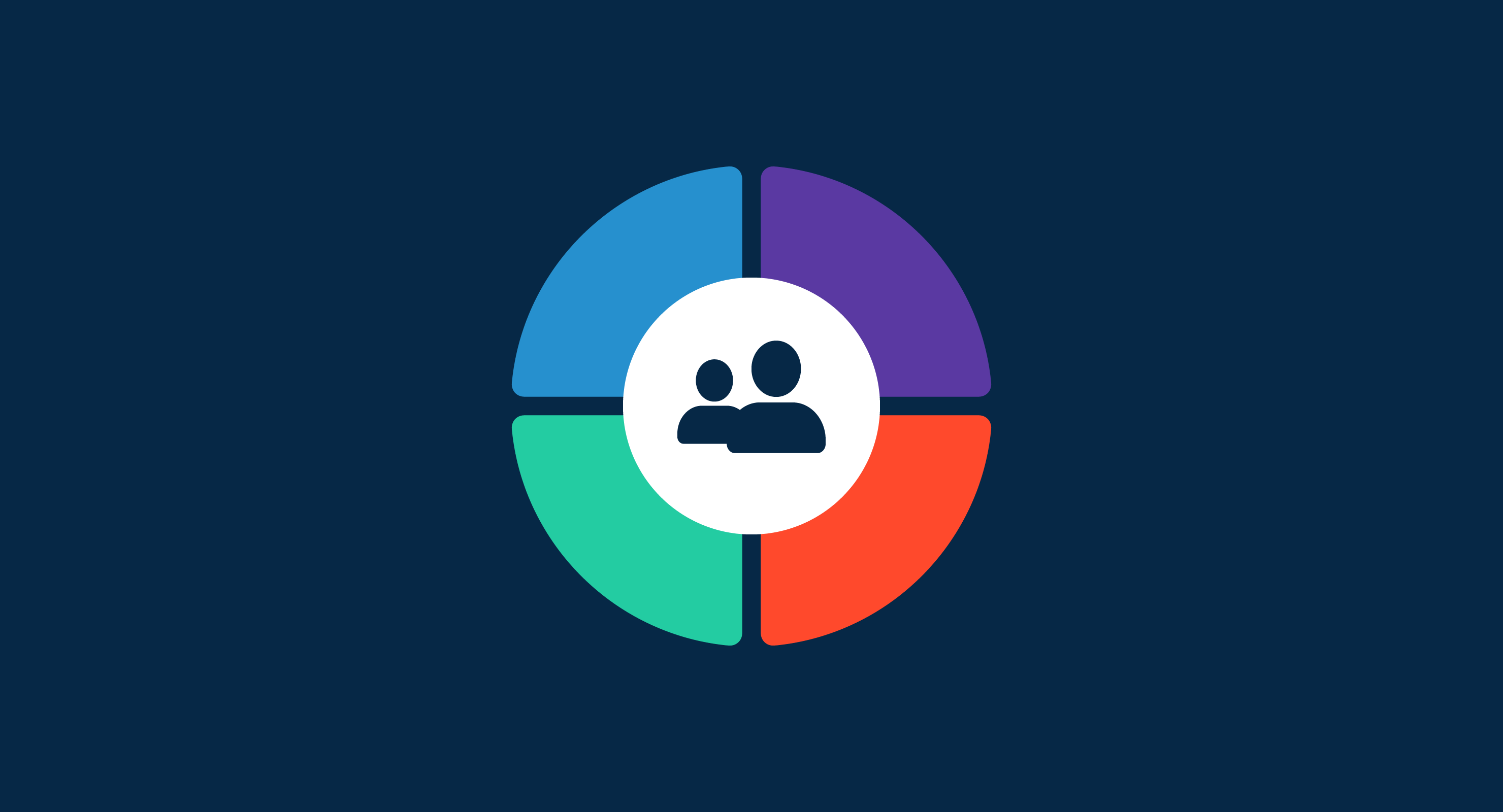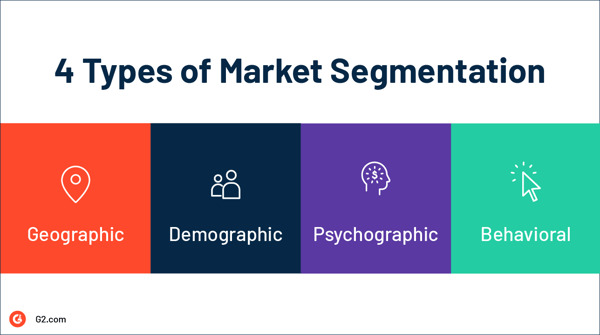April 12, 2023
 by Hannah Tow / April 12, 2023
by Hannah Tow / April 12, 2023

You’ve spent time and money creating the perfect marketing strategy, and you want your message to resonate well with your potential customers, right?
Communication is an art, and it’s incredibly easy for a message to become lost, confused, or avoided altogether as the size of your audience increases. The larger your audience grows, the broader their preferences, needs, and opinions become which can put your marketing message at risk of being irrelevant to the majority of people you’re attempting to reach.
This is exactly why segmenting your target market is crucial. Making use of marketing automation software can help better manage a large audience and create a segmented, personalized, and targeted marketing experience. This practice allows you to focus your marketing efforts on individual customer segments so that you can better cater to their specific wants and needs.
This method gives your brand an advantage over your competitors because you can prove to potential customers that you understand them and know what they need best.
Market segmentation is a business practice that brands use to divide their target market into smaller, more manageable groups of people based on common ground they share to optimize their marketing, advertising, and sales efforts. Simply put, customers of each market segment have similar characteristics that businesses can leverage to advance their efforts.
Market segmentation aims to introduce a tailored message that will be received successfully. This is advantageous for companies with a product or service in the marketplace that boasts multiple benefits or uses for different types of customers.
Accept the fact that you can’t be everything to everybody, and as a marketer, you can’t solve everyone’s problem or appeal to every single person. This is exactly why market segmentation is such an effective growth strategy to implement.
Tip: Before starting with market segmentation, you must have a solid marketing mix. This is your foundation for everything that comes next in this article.
As you can imagine, you can take many different approaches when segmenting your target market.
This article will walk you through the four main types and real-life market segmentation examples to help you get started. Learning from those who have done it right will help your brand garner that success you’re looking for.

Geographic segmentation targets customers based on a predefined geographic border. Differences in interests, values, and preferences vary dramatically throughout cities, states, and countries, so it’s important for marketers to recognize these differences and advertise accordingly.
Think about products such as parkas and bathing suits.
Parkas will be sold most of the year in the colder northern half of the country, whereas southern areas may only be able to find parkas in specialty stores during the wintertime. On the other hand, bathing suits are sold year-round in the warmer states but are typically only sold during the spring and summer in the cooler states.
Another example of geographic segmentation is the iconic fast-food chain McDonald’s. If you’ve never traveled to another country and stepped foot in a McDonald’s, you’re in for a surprise!
Would you believe that in the Philippines, McDonald’s sells McSpaghetti? And in Hong Kong, they sell ramen flavored french fries?
These are all ways McDonald’s has segmented its customers based on geographic location to better cater to food preferences and different cuisines around the world.
Ryan Moothart
PPC Architect, Portent
Demographic segmentation divides a market through variables such as age, gender, education level, family size, occupation, ethnicity, income, and more. This form of segmentation is widely used due to specific products catering to obvious individual needs relating to at least one demographic element.
Perhaps the most obvious variable of them all, age is a crucial element for marketers to understand thanks to the fast-paced nature of preference changes within the various stages of life.
Even media consumption differs greatly between each generation, so it’s important to recognize your target age range and which channels they use to consume information to ensure your tailored message reaches them appropriately.
An example of demographic segmentation is when clothing companies cater to multiple age groups. For instance, Lululemon sells athletic clothing to adult men and women of all ages, but they also cater to girls between the ages of 6 and 15.
By analyzing its current customer base, Lululemon saw an opportunity to serve a new market and expand its business.
Many clothing companies cater to a variety of age groups to reach as many customers as possible. Think H&M, Old Navy, and Zara. All of these companies cater to men, women, and children of all ages, and they have distinct labels, advertising, and styles for each segment.
Unlike geographic segmentation and demographic segmentation, psychographic segmentation focuses on the intrinsic traits your target customer possesses.
Psychographic traits can range from values, personalities, interests, attitudes, conscious and subconscious motivators, lifestyles, opinions, and more.
To understand your target audience on this level, methods such as focus groups, surveys, interviews, audience testing, and case studies can all prove to be successful in compiling this type of conclusion.
Think about the lifestyle of someone who lives in a small beach town and surfs for a living versus someone who lives in a big city working in corporate America. These two people have incredibly different wants and needs on a daily basis, and marketers must recognize those differences to be successful.
For example, Starbucks does a fantastic job segmenting its customers based on psychographic traits. We all know that not everyone loves coffee or prefers to drink it, but that doesn’t stop Starbucks from appealing to just about everyone.
Starbucks sells chocolate milk, cake pops, granola bars, cheese sticks, and more for the little kids that accompany mom or dad on their morning coffee run. Of course, those items aren’t strictly for the kids, but those items sure are tempting when you have a fussy one.
What about for those sophisticated coffee drinkers who care about quality and bean sources? Starbucks appeals to them by selling a variety of exotic beans sourced from regions all over the world. And what about those who don’t really drink coffee, but all of their friends do, and they enjoy an afternoon hang out at Starbucks? Think frappuccinos, lemonades, teas, and juices.
It’s one thing to sell products that can appeal to everyone, but it’s a whole new ball game when those products make every single person feel individually catered to. This is what Starbucks does through its messaging to create a sense of belonging.
They cater to each segment’s wants and needs through targeted marketing campaigns to ensure their coffee brand is inclusive to all, even if you aren’t a coffee drinker.
John Donnachie
Director, ClydeBank Media
Behavioral segmentation has similar measurements to psychographic segmentation, but instead, it focuses on specific reactions and the ways customers go through their decision making and buying processes.
Attitudes towards your brand, the way they use and interact with it, and their knowledge base are all examples of behavioral segmentation. Collecting this type of data is similar to the way you would find psychographic data.
Brand loyalty is an excellent example of behavioral segmentation. While reading this article, I bet that you can think of one brand that you consistently purchase and trust enough to buy its newly launched product without even reading the reviews.
This type of brand loyalty produces a consistent buying pattern which is categorized as a behavioral trait. Marketers work hard to get customers to love and stay loyal to their brand for a consistent purchase cycle.
To target customers that have great brand loyalty, many companies will offer rewards programs to enhance this behavior with the hope of capturing new loyal customers as well.
For example, the makeup and beauty company, Sephora, has an excellent rewards program for its loyal customers. The more you spend at their store, the more points you rack up, which can be redeemed for generous samples. In addition to that, they offer free services, special access to sales, and more!
By targeting and rewarding those who already had an affinity to their brand, Sephora was able to build an impressive community that their target market wants to be a part of.
Now that you understand the four major types of market segmentation, you’re probably wondering what the major benefits are of implementing them.
The importance of this strategy goes far beyond placing your target market into cohesive segments.
It becomes even more effective when combined with established marketing models to refine your overall marketing approach.
For starters, those cohesive customer segments will lead to great customer retention. Capturing customers at the beginning of a perfectly tailored customer journey will provide an excellent brand experience and increase the likelihood that they will stay loyal to your brand.
Based on a recent study, 3 out of 4 customers are ready to make a significant move – switching brands – following a single negative experience. This is not just a minor bump in the road; it's a pivotal moment.
What's even more alarming is that 52% of dissatisfied customers won't keep their dissatisfaction to themselves. They will also make sure their friends and family hear about it, actively discouraging them from purchasing the brand that let them down.
Market segmentation safeguards your brand. By slicing your target market into smaller and more manageable groups, you're not just optimizing your efforts but also building a stronghold against negative experiences. It helps you outpace negative experiences with positive interactions and prevent potential brand defection before it even begins.
If every message and product shared with them resonates in some way, they will have a difficult time saying no to you.
Market segmentation can help you discover new ways to reach your current customers but also help you find new markets of potential customers you haven’t previously reached. Analyzing your customers in-depth will help you uncover unknown needs or problems that they face that your brand can solve.
This discovery can lead to new product lines, rebrands, or new brands, all to catapult the growth of your business by appealing to your current customers better, as well as new consumers that were previously uninterested.
If you know how to speak to your customers correctly, you’re more efficient with your efforts, which means you spend less money. It’s as simple as that.
Gone are the days of your team spinning its wheels, trying to come up with something that will stick. You'll get it right by segmenting your customers correctly every single time.
To implement a marketing strategy, it's important to understand how to perform market segmentation. Here is a step-by-step guide to help you divide your target audience and cater to their needs in a personalized manner.
Now that you understand the basics of market segmentation and have seen it in practice, it’s time to focus on the common mistakes marketers can make when segmenting their target market for the first time.
This can be rather easy to do if you’re trying to ensure that you have every last detail included. If a segment is created too small, you’ll lose the buying power of that group as well as create a segment with non-quantifiable metrics.
At the end of the day, every single person is vastly different. You cannot appeal to every aspect of every person.
People change, and they can change fast. It’s in your brand’s best interest to refresh its strategy and resurvey its customers from time to time.
Choose a cycle that makes sense for your business and stick to it. This can be a quarterly refresh, yearly, or every couple of years; if you’re seeing big changes within your customers, perform a refresh then, too.
You may have segmented a large customer base that aligns with your strategy, but if that segment doesn’t have the buying power or a legitimate need for your product, then you won’t have a positive ROI.
Market segmentation can be a laborious and complicated task, and mistakes in the beginning stages may seem inevitable. Being aware of these common downfalls will better prepare you and your team so you don’t make them in the future.
It’s time to put what you’ve learned to use. Here are five steps that lay the process out simply, plus the two strategies that are most commonly used to guide them. Once you’ve got these basics down and you have a solid foundation for your strategy, branch out, and make it uniquely your own.
Before getting started, consider using marketing automation software to streamline and measure your efforts effectively. As your strategy becomes more complex and your campaigns grow larger, you’ll be happy with the amount of time and resources you were able to save from having everything automated from the very beginning.
As the name suggests, a concentrated marketing strategy is when a company chooses only one market to focus all of their time, money, and efforts on. This strategy is usually chosen by smaller businesses or those that are just taking off and starting to make a name for themselves in the marketplace.
Success is typically seen when targeting a smaller group of people since the strategy has to appeal to the entire segment. Appealing to an entire segment becomes challenging when the segment is too large.
You should be aware that your growth opportunity is limited when using this strategy. Once you’ve capitalized on your market and are seeing great success, consider tapping into other similar markets to continue to drive growth.
On the other hand, a differentiated marketing strategy is when a company focuses on two or more markets. Companies that utilize this strategy market their products to many different segments, they just change their messaging to appeal to all of the differences.
Although a differentiated marketing strategy requires a lot more effort, time, and money than a concentrated marketing strategy would, it typically yields more success since there are many more avenues to profit.
Where does your brand fit within the current market landscape? Is there a need for the solution you promise to provide? How large is the market? These are all important questions to consider when starting this step.
This is where it gets fun. Decide which of the four segmentation methods you’re going to use, but don’t feel confined by one segmentation method.
It’s common for brands to implement more than one segmentation technique and take a combination approach, so play around with each and find the perfect mix for your brand.
Ask your target market questions related to your chosen segmentation categories. You should get to know your target market through and through at this step. You can use surveys, focus groups, polls, and more to obtain your answers. Make sure you’re asking questions that will provide quantifiable answers.
Interpret the responses you receive to create dynamic customer segments that are unique to your brand. You can use a customer support tool too. Make sure that you’re focusing on the buying power of the segments and not creating any that are too small. Look over the common mistakes one last time to ensure you’re not making any!
Ensure that you have interpreted your responses accurately by testing it on your target market. Implement conversion tracking early. It’s one of the best ways to determine the effectiveness of your strategy.
If you’re not relating to your customers with the segments you’ve created, you’ll need to review your survey methods and analysis. Be sure your chosen strategy has unique characteristics from others in the marketplace to stand out.
By determining the proper strategy for your needs and following the basic steps outlined above, you can ensure your market segmentation strategy will be effective and successful.
Market segmentation is a highly effective strategy for every marketing team. It proves to your customers that you understand them by providing a tailored message that resonates with specific facets of their lives. Knowing how to get a message across successfully will help your brand grow exponentially.
Remember, your success won’t last long if you’re not constantly testing your strategy. To be competitive, you must always be on top of your game.
Market segmentation comes down to knowing your customer base and providing a personalized experience for them. For a seamless customer journey across your segments, learn how to implement an omnichannel marketing strategy next.
This article was originally published in 2021. The content has been updated with new information.
Hannah is a former content marketing associate at G2. She graduated from the University of Missouri with a degree in Journalism. In her free time, Hannah enjoys running with her dog, Teddy, traveling to new and exciting places, and capturing the beautiful places she travels to with her DSLR camera. (she/her/hers)
Content marketing plays a key role in both customer acquisition and retention.
 by Neelam Goswami
by Neelam Goswami
Content marketing plays a key role in both customer acquisition and retention.
 by Neelam Goswami
by Neelam Goswami




